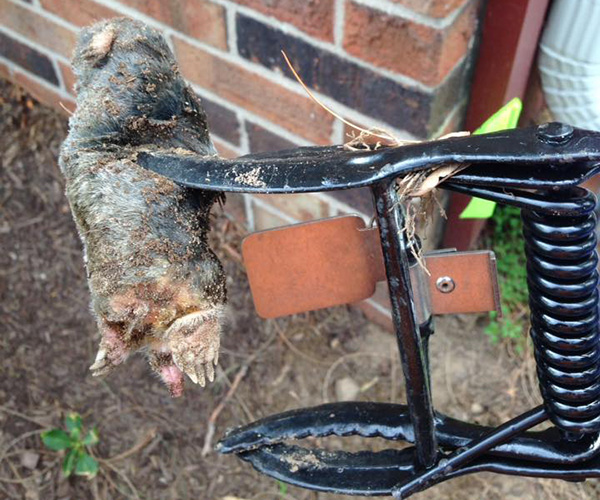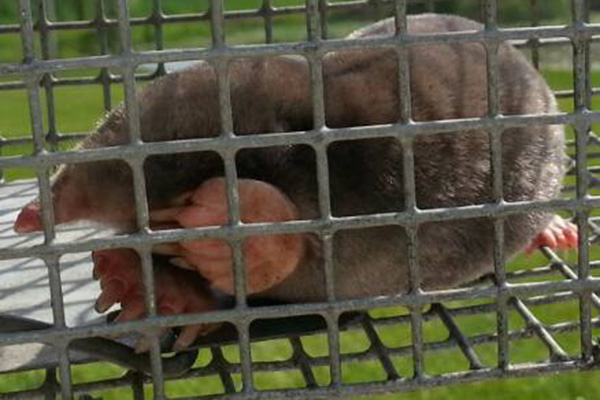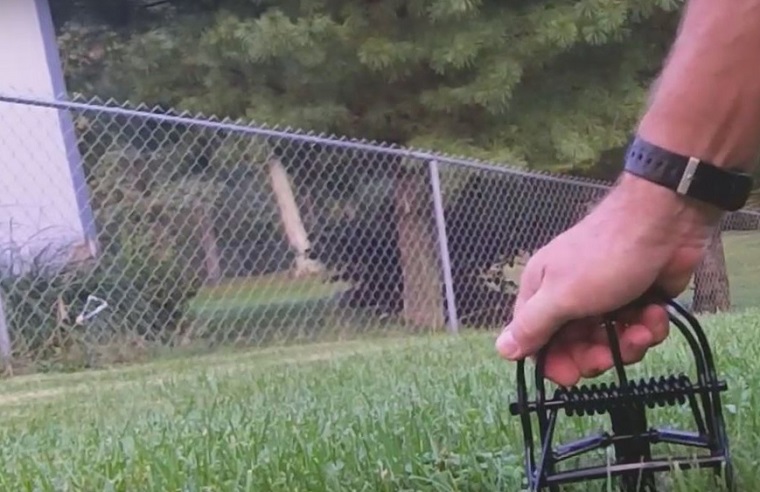-
info@aaanimalcontrol.com
Call us for help in your town
Humane Wildlife Education
Tips on How To Properly Trap a Mole
Need mole removal in your hometown? We service over 500 USA locations! Click here to hire us in your town and check prices - updated for year 2020.
Most of the known mole traps are lethal traps, which are meant to kill a mole once it is caught, only few mole traps are live traps. Even the few live traps available are ineffective in catching this small mammals and are often hard to set, thus making their use rare.
LETHAL TRAPS
How to set and where to put lethal traps are the two most paramount factors that determine if the trap will catch a mole or not. In terms of setting, most of the traps come with user manuals which are meant to guide you on how to use them. If you have difficulty understanding its usage or setting the trap, you may consider hiring an animal control expert to avoid injury to yourself.
To get the right location to set your trap, just find an active tunnel which is in use by the mole, you can recognize an active tunnel by the mole hills made around it. Then, place the trap at the entrance of the tunnel, so that the mole will be caught as it attempts to come out of the tunnel.
The other factor here, is the number of traps that you use per time, it is advisable to set a trap at the mouth of each tunnel observed. If there are 4 tunnels made by moles inside your garden, buy or hire 4 traps and set one at the entrance of each tunnel. You may also bait the trap.
Need mole removal in your hometown? Click here for our nationwide list of hundreds of
wildlife removal experts, serving all 50 states!

There are different types of lethal traps with different mechanisms used in catching moles. The most popular ones are:
1. Spear Traps
This trap, also called a harpoon trap, comes with a sharp spear that pierces through a mole once it is caught. . The trap is set at a spot above the tunnel, and whenever a mole tries to pass through this spot, the spear pierces the mole, killing it instantly.
2. Paper clip trap
Paper traps make use of body clamps and pins in trapping moles. They are usually set back to back inside the tunnel with each of the traps facing outward. When the mole attempts to move through the tunnel, it will hit a pin and the pin will slip, releasing the clamps. These immediately trap and squeeze the mole, killing it quickly.
3. Barrel trap
The barrel trap features a metal or half cylinder, which is to be inserted into the tunnel. This trap will be triggered when the mole tries to move through the cylinder. Once triggered, a loop installed inside the cylinder will fasten around the mole and choke it to death without much agony or pain.
4. Scissors trap
There are two scissors-like blades inside this lethal trap. To use scissors trap, find an active tunnel, dig a small hole in the middle of the tunnel and set the trap there with each pair of the blades on either side of the trigger pan; then place trigger pan carefully above the ground. Once the mole attempts to come out of the tunnel and it touches the trap, the trap will be triggered and the two scissors-like blades will come together with the mole in between them. The mole will be dead immediately. A good example of scissor-like trap is the Out O' Sight mole trap,
Learn how to kill a mole.

LIVE TRAPS
Although only a few live traps work, heavy duty traps like the Talpirid trap may effectively catch moles alive. Like lethal traps, live traps must be set over active tunnels. Let the trap sit comfortably at the mouth of the tunnel, it will be triggered once the mole tries to crawl out of the tunnel. The mole can be released by removing the trap and compressing the pedal by hand. The mole should be released into the woods or other conducive environment for its survival. The Talpirid trap can be used over and over again.
Another live trap is the bucket-shaped trap; it should as well be placed over an active tunnel and covered with debris to conceal it. Moles fall in whenever they try to exit the tunnel and are unable to get out by themselves.
Note: using a bait in your traps increases their effectiveness in trapping a mole, the bait serves to lure the mole in in the case that it becomes suspicious or cautious. Good examples of bait are grubs and worms. You can dig ground to get these baits or buy them from animal control shops. Read about mole prevention here.
Go back to the main how to get rid of moles page for better information.
Need wildlife removal in your town? Now serving over 500 US locations - updated for 2018
Trapping moles is generally considered to be one of the most effective ways of ridding land of a mole problem, but just as with many other approaches, it can come with its fair share of negative points that are worth bearing in mind.

Moles are quite hard to trap. They can live in vast tunnel systems underground, and it’s not uncommon to set many traps in various tunnels to no avail. Many of these tunnels are simply not used by the animal, and without the right information (usually coming with monitoring or past experience), it means that you could be wasting your time with traps in all the wrong places. In the time that you are not trapping these animals, they are comfortably establishing themselves. Those tunnels can cause serious stability issues, for general land as well as the buildings that sit on top of it, and they're often used by other animas when they move out too. The process of removing a mole from your land, and then clearing up after the destruction it caused, can be extensive, time-consuming, and costly. Very costly.
Trapping is much harder during the winter and usually doesn't work very well. The story is different in the spring, but you will want to trap in the late spring and fall. Early spring usually means that there are young moles in the tunnels too, and they'll die in the holes unless you sort out the entire problem. As you can probably imagine, the carcasses will soon attract other wild critters, such as rats and mice, and could even encourage larger predators to come and take a closer look too.
In the fall, you have a higher chance of getting the adult moles, as well as the youngsters, almost ready to start life on their own. If you go any earlier, the youngsters may not have left the comfort of their nest yet. Any later and they may already have gone deeper …
During the winter, moles seem to disappear, not really causing too many problems. This is because they have gone deeper underground, looking for warmth. This also means that trapping them will be much more difficult.
There are a lot of different traps out there for moles, but you will want to make sure you're picking the right size, style, and outcome too. Some are live cage traps, designed to capture the creature so that you can release it later on, somewhere it can’t cause you any more problems. Others are kill traps, designed to destroy the animal upon triggering the trap. Live cage traps will give you the problem of what to do with the animal afterwards, but kill traps offer up a rather messy cleanup operation, and doesn't get to the root of the problem again — any youngsters that could still be hiding within the tunnels.
When it comes to placement of your mole traps, you will need to make sure you're using heavily-visited tunnels. Finding out where the tunnels themselves are isn't that difficult with a probe or long stick, but working out whether or not the animal is using the tunnel is a different matter entirely. You could end up placing a trap in a tunnel that has been used in months, which doesn't help your cause.
There are a number of different brands of trap on the market, and lots of different styles too. Some of them are very simple and quite old-fashioned, metal with no updates. Others, on the other hand, are more expensive, but come with signaling options to show whether or not an animal has been trapped and suchlike. Just a quick look on the internet will give you plenty of results, but make sure you do your research on the specific one(s) that you're planning on using, and always follow the instructions. You should also check out local legalities surrounding the safe and humane removal of moles from residential or commercial properties.
For more information, you may want to click on one of these guides that I wrote:
How to Get Rid of Moles
how much does mole removal cost?
Types of mole traps


















